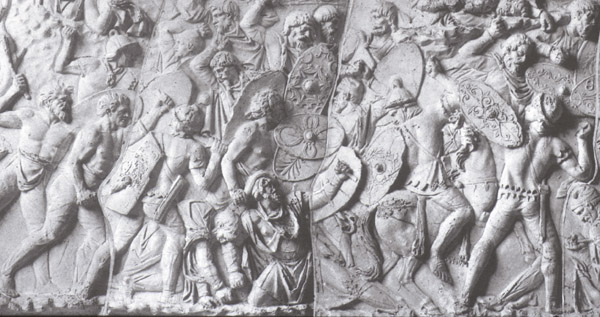Those aren't Romans being depicted in that image but auxiliaries, as you can see from there use of clubs and an oval shield. Since during the time of Trajan the legionaries would still be using the rectangular scutum. Auxiliaries, while sometimes armed similar to the legionnaires would also be made up of peoples drawn throughout the empire who were armed in different ways.
Also it wasn't uncommon for the "barbarian" tribes to fight shirtless with only a shield and spear or sword. The shield for most of antiquity was the primary means of protection and armor was found only on those who could afford it, which in a tribal society like the Dacians would be noble and other men of high status.
And concerning this whole LS vs LH debate. From what I've read LH was most common in the first half of the 1st century AD, then LS slowly began to replace it, but LH made a resurgence again in the later half of the 2nd century AD along with other changes to the Roman army (the oval shield replacing the rectangular scutum being one)





 Reply With Quote
Reply With Quote















